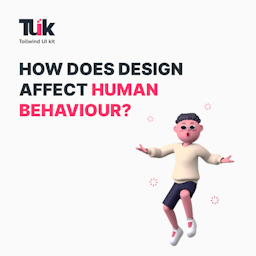Others
17 November 2021
UX Maturity in Organizations

UX maturity assesses an organization's desire and potential to deliver user-centered designs. Jakob Neilson in 2006 came up with one of the earliest UX maturity models with 8 stages of UX maturity. Each stage narrated the presence of User Experience in various organizational circumstances. It caters to organizations and companies that do not engage in UX research to companies that are research focused and dependent on results.
Since then, a lot has changed in the world of Web Design. The Neilson Norman group later on revised the maturity model and how it should be measured and modeled considering other important factors to incorporate new norms.
User Experience Maturity model
This model is a framework that measures user experience related strengths/weaknesses of organizations and agencies. Through this framework, it can be determined where your company currently stands or which stage it occupies. The UX maturity model also provides insights on how an agency or an organization can increase its UX maturity.
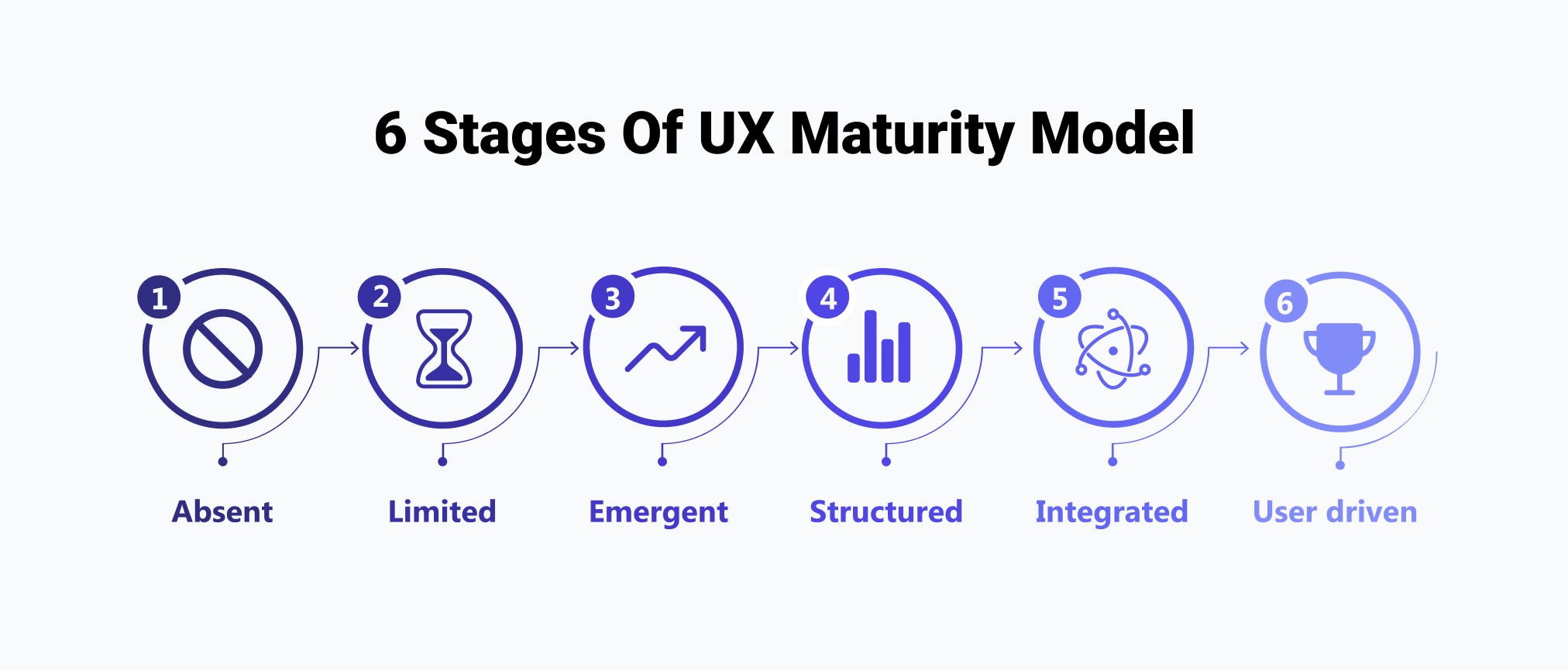
The 6 stages of NNG’s User experience maturity model
- Absent: There’s no UX design or UX research
- Limited: UX lacks importance and is rare.
- Emergent: The UX work is done incongruently and ineffectively but is promising and functional.
- Structured: The organization has a semi-systematic UX-related methodology that is widespread, but with varying degrees of effectiveness and efficiency.
- Integrated: User experience work is extensive, compelling, and pervasive.
- User-driven: Commitment to user experience at all degrees leads to deep awareness and exceptional user-centered–design outcomes.
Stage 1: Absent
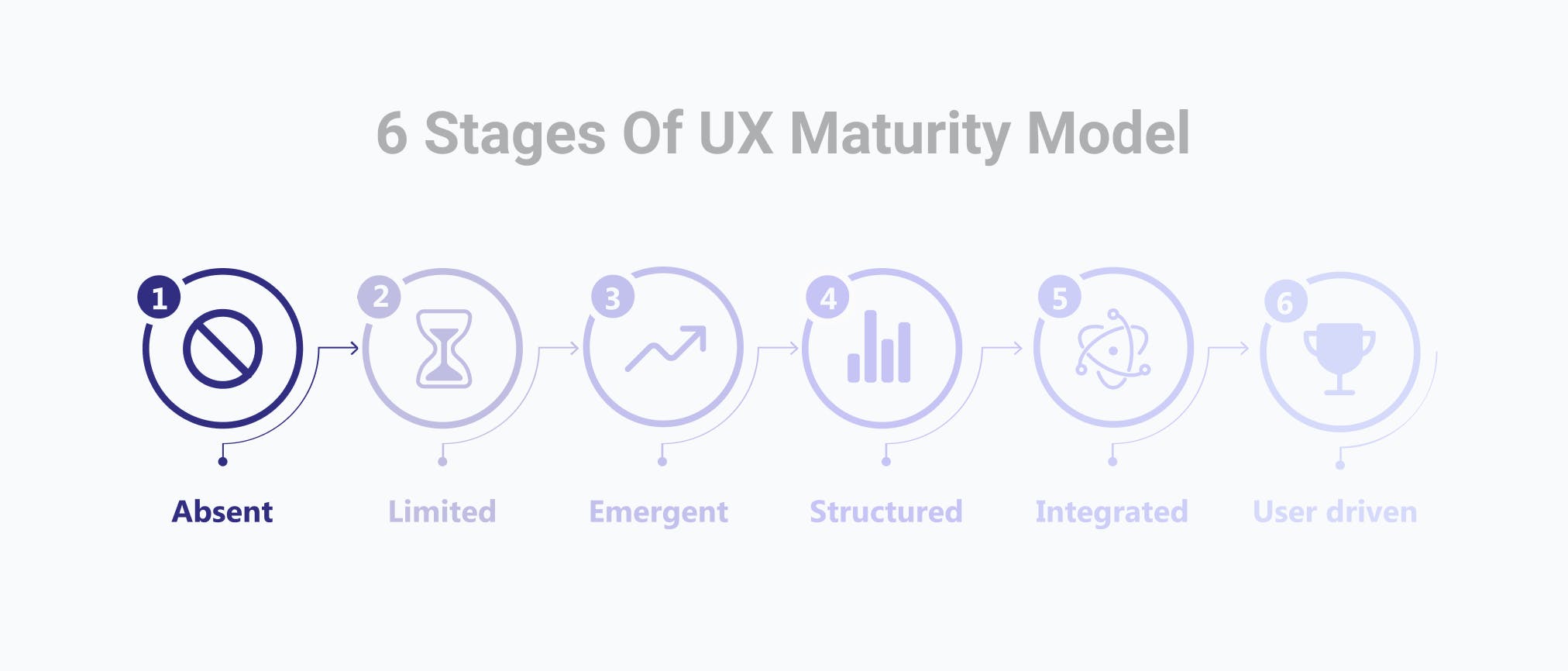
Organizations in stage-1 lack User experience. Companies at this stage are either insensitive or believe that they do not need UX research in order to develop user center designs. User experience related work is not planned or structured well, let alone incorporated into the organization’s vision and people who consider users important and think about user-centered design, they’re either dismissed or ignored.
This stage comprises organizations where developers are very well aware of the importance of UX and try to create good experiences through designs but just because they don’t have any access to the resources, methods, and organizational support they fail to do so.
Stage 2: Limited
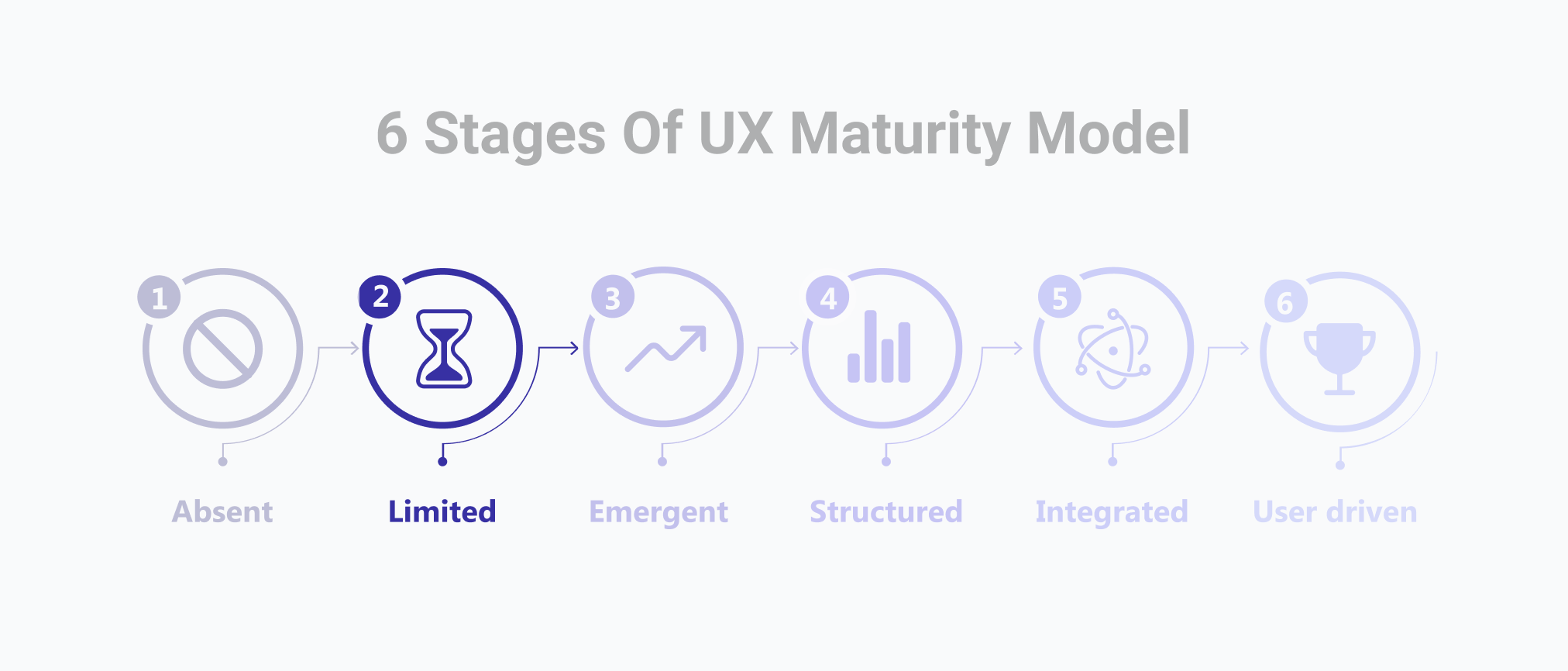
The approach of organizations at this stage towards user experience is erratic. Small efforts made by the companies are due to the following reasons:
1: Legal requirement
2: If someone in the company that is aware of UX takes initiative.
3: A ream that tries to experiment with UX methods
Companies and organizations at this stage are aware of user experience and sometimes engage in activities regarding UX but don’t do it consistently, take it up as a routine or part of their work and because it is never a priority it’s never well-executed or considered into strategy or planning. At these organizations, UX is not recognized as a discipline and so there are no dedicated roles and budget for it.
Stage 3: Emergent
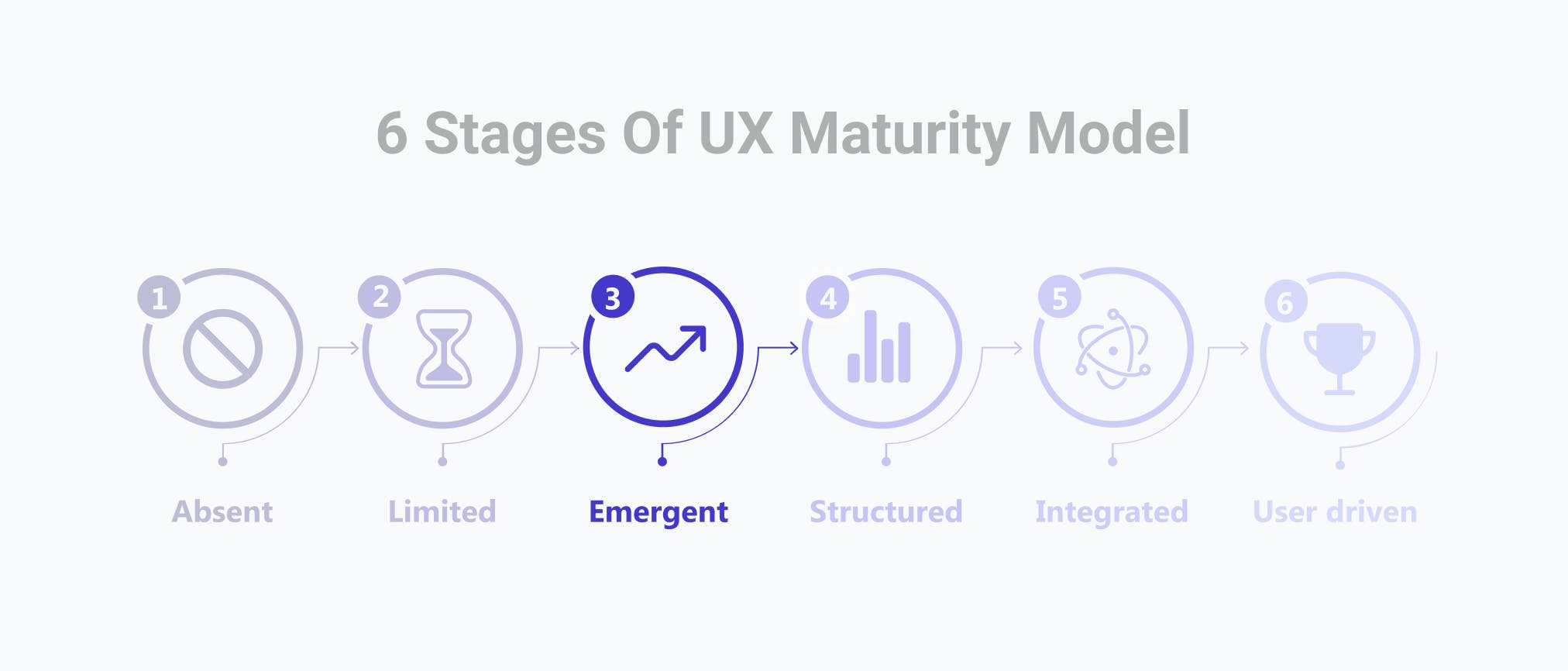
Organizations at this stage perform UX related work more often, they may also have a budget for it and may also engage in UX related activities and planning. However, these efforts are unstable, small and are usually initiated by an individual rather than the policy of the company or organization. Teams that use design methods and engage in research may begin to see improvements and results of their efforts. At this stage, organizations do have UX researchers or designers but the team is not skilled enough to make a shift from this stage to the next. So, the organization keeps working to provide the value and impact of User experience.
Another issue is that these organizations don’t have a user experience process in place. Some leaders like to advocate for it but when it comes to trade-off, user experience is usually the first one to go. It is yet not prioritized at these companies as an essential strategy. It is very common to find big enterprises stuck at this stage especially in fields like healthcare and finance etc.
Stage 4:Structured
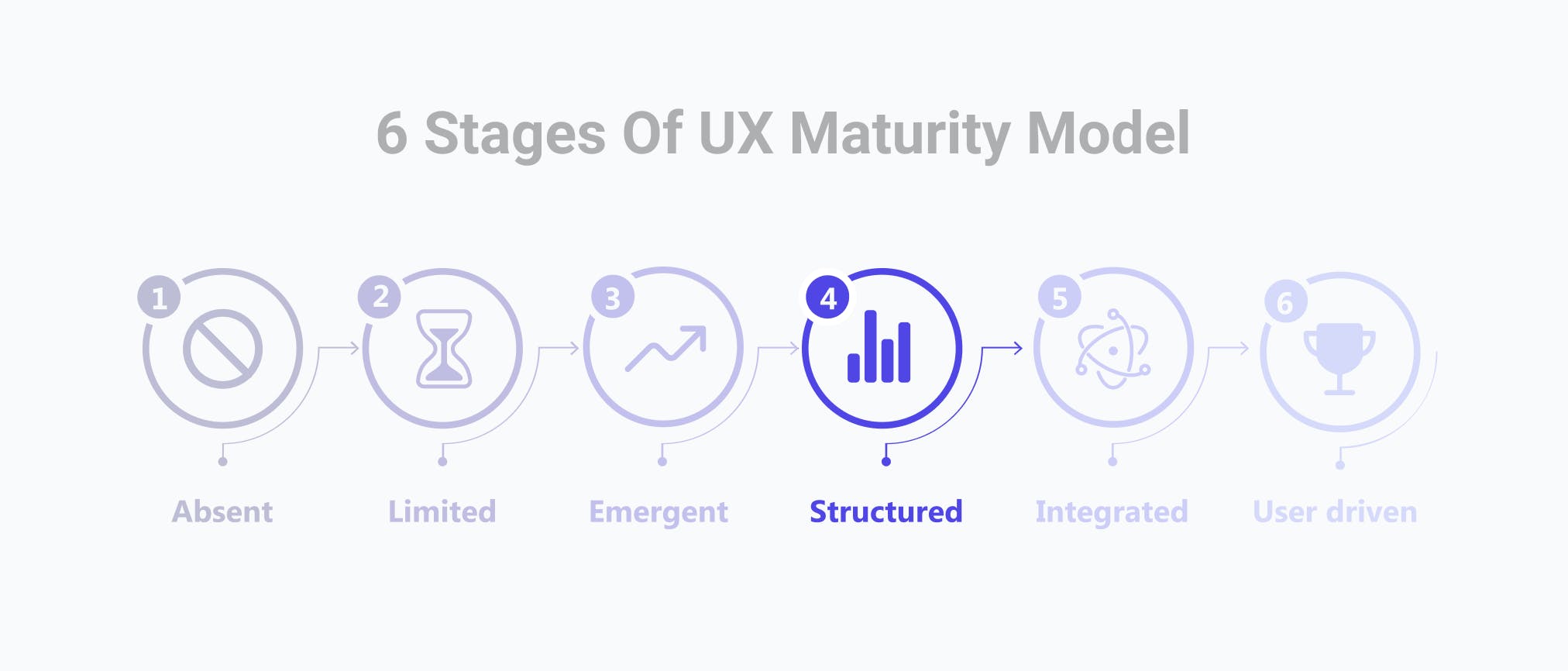
Organizations at this stage recognize the value of user experience and have a complete team or teams in place working on UX. Leaders at this company are supportive of the UX and incorporate it while making high-level strategies or plans. Organizations at this stage have a good description of design and a shared, iterative human-centered design process and throughout the lifecycle of the product, user research is regularly conducted to make sure it’s benefitting the users.
Most organizations will land at this level and this is the farthest most of the organizations will ever go in their UX maturity.
Stage 5: Integrated
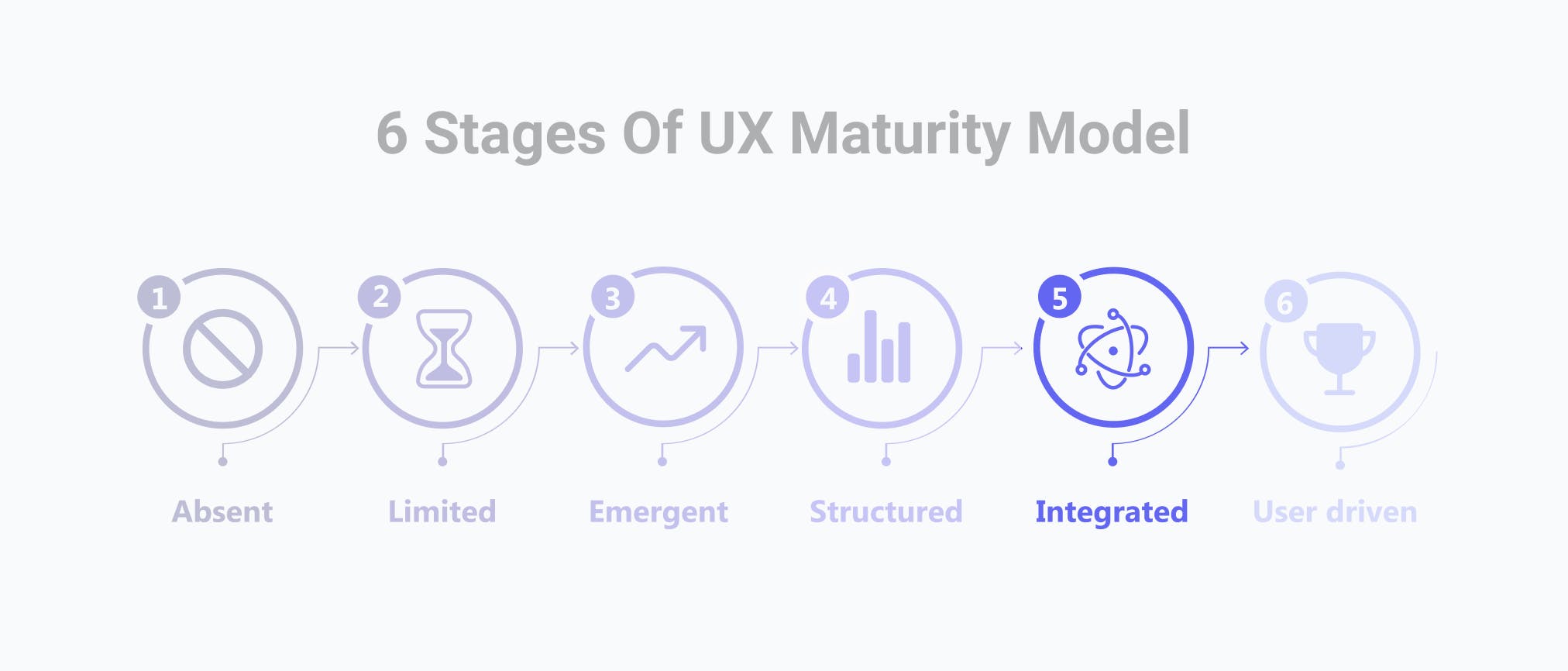
Organizations that reach this stage have work that is comprehensive, universal, and pervasive. At these organizations user experience related activities are performed by almost all the teams in an effective and efficient manner. They sometimes innovate their user experience methods that also tend to contribute to the field of UX and the reason for the success of these organizations becomes leaders that are focused on user-centered design. Most organizations should aim to reach the stage of integrated UX because at this level their work serves business goals being highly effective. At this level, sometimes, the staff of the organization may get too focused involved in the process instead of the results and impact or they may concentrate on metrics that are not user-centered.
Stage 6: User Driven

A handful of companies are on this stage and are loved and respected by everyone. At this level, everyone is very well aware of user-centered design. Understanding the needs of the users through research is the primary aim of the company’s strategy and is the priority. Team leaders, individuals, and teams are user-centered and pay attention to User experience in day-to-day work whether its highest level of strategy or the smallest design elements, there’s always UX research involved. They plan for change and innovation. Organizations at this stage contribute back to industry standards and rely on UX research to manage new investments and markets. The business vision of organizations at this stage is always user-centered design or is highly interlaced with user-centeredness.
Conclusion:
Considering UX is very important as it’s a step towards the effort to fulfill user requirements, needs or maybe solving a problem for them. The goal of an organization should be to provide positive experiences to the users that keep them loyal to the brand or product. Moreover, a positive UX also enables organizations to define a journey for users that later define their business success.

